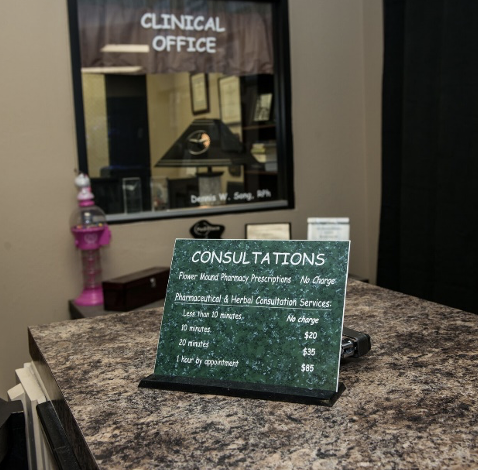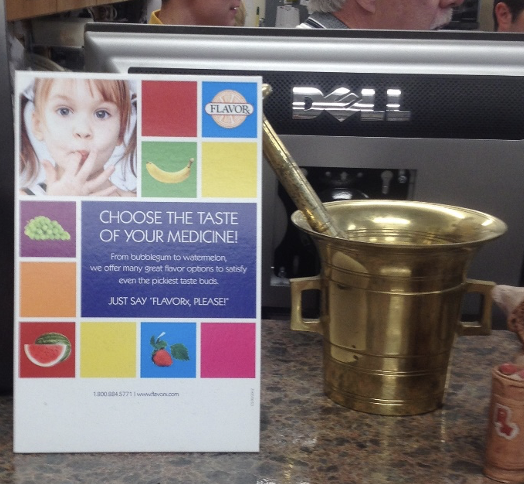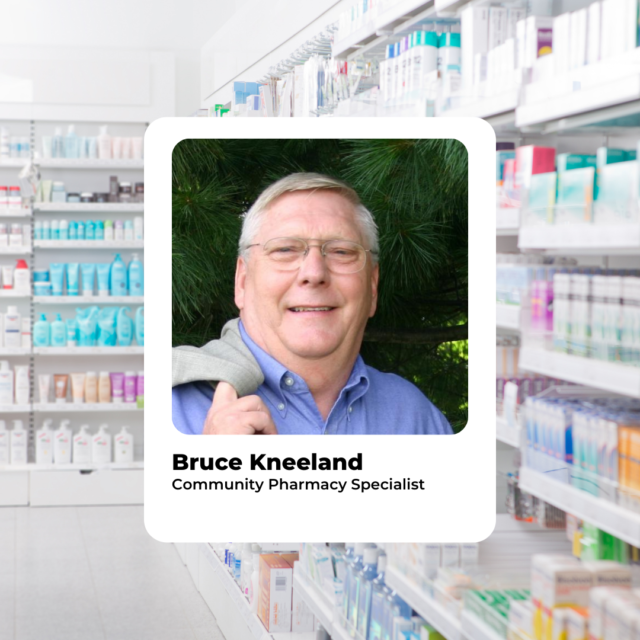A Bright Future for Independent Community Pharmacy
The late Yogi Berra, former star of the New York Yankees and member of the Baseball Hall of Fame is reported to have once said, “You can observe a lot just by watching.”
With that as a foundation I’d like to offer up three observations on why independent community pharmacy has a bright future. While I am not a pharmacist, I have called on, worked for and written about independent community pharmacy for over 40 years. More importantly, in the past two to three years, I have interviewed or visited scores of successful pharmacies that are making good things happen. Here is some of what I am seeing.
Observation number 1:
Pharmacy owners are starting to believe they are legitimate members of the healthcare team.
Here’s a short list of what many pharmacists are doing; comprehensive medication reviews and sharing the results with physicians. Arranging for pharmacogenomic testing, doing the patient evaluation and once again sharing the results with physicians. Administering immunizations of all types. Providing diabetes prevention and smoking cessation classes, weight loss counseling and, in some states even prescribing birth control pills.
Over the past few years thousands of pharmacies have obtained a Clinical Laboratory Improvement Amendment (CLIA) waiver. While COVID tests are the driving force, others tests, such as flu, strep, cholesterol and A1c are common.
 One emerging area of opportunity is Drug Nutrient Depletion. That many medications cause problems is well documented. Clinically oriented independent community pharmacy owners are finding socially acceptable ways to alert their patients to these problems and suggest products that will address the issue. Still, other, perhaps more aggressive pharmacy owners, are going one step further and actually working with patients to replace prescription medication with supplements. My wife is one such person. She has replaced a statin that was causing kidney problems with an assortment of pharmaceutical grade supplements with positive results.
One emerging area of opportunity is Drug Nutrient Depletion. That many medications cause problems is well documented. Clinically oriented independent community pharmacy owners are finding socially acceptable ways to alert their patients to these problems and suggest products that will address the issue. Still, other, perhaps more aggressive pharmacy owners, are going one step further and actually working with patients to replace prescription medication with supplements. My wife is one such person. She has replaced a statin that was causing kidney problems with an assortment of pharmaceutical grade supplements with positive results.
The biggest impediment to the more rapid growth of these healthcare services is the reluctance of pharmacies to ask people to pay out-of-pocket for them. Those hesitant to charge patients are invited to consider that tens-of-millions of consumers pay for yoga classes, massage therapy, health coaches and gym memberships. While most people may not be ready to pay for services in a pharmacy, some are! How do I know – because I have seen them do it.
Observation number 2:
Independent community pharmacy owners are learning how to advertise more effectively. More owners are hiring an ad agency or tasking a current employee to focus on this task. Better advertising is important because most people do not expect to get the kinds of services mentioned above in a pharmacy. To be successful pharmacies need to create attention grabbing flyers, point-of-purchase signs, and commercial ads that “speak to consumers.” And that takes a variety of skills few pharmacy owners possess.
One commonly heard refrain from pharmacy owners is, “ads don’t work.” While many ads don’t work, that does not mean all ads don’t work. The real problem is that too many pharmacy ads just don’t convey any meaningful message.
Advertising messages like: we provide fast, friendly services; or, serving the community for 50 years; or, your locally owned pharmacy, don’t work. That’s why using people trained in copy writing, graphics, creative messaging and that know when and where to place ads is critical. Like pharmacy, advertising is a profession and it requires people with carefully honed skills to pull it off.
Now, with the rise of social media and digital advertising the need for using an expert has grown exponentially. While most independent community pharmacy owners can find someone on staff who knows how to post on Facebook or Instagram, it is very rare for these people to be able to “bench mark” their performance. Without the ability to benchmark your digital ads’ performance with other pharmacies it is just impossible to know if the results you are getting are; good, bad or indifferent.
 A few years ago, I visited a small chain with locations in several rural Colorado towns. One of the partners told me he had talked with a local ad agency. After learning about some of the digital services the agency provided, he convinced his partners to combine their budgets and hire the agency. He said their total ad spend went down and the results went up.
A few years ago, I visited a small chain with locations in several rural Colorado towns. One of the partners told me he had talked with a local ad agency. After learning about some of the digital services the agency provided, he convinced his partners to combine their budgets and hire the agency. He said their total ad spend went down and the results went up.
One key service the agency provided was geo-fencing combined with targeted text and email messaging. He said they created messages designed to appeal to specific demographic segments; new mothers, senior citizens and even people currently trading at one of the chains in their area. The messages mentioned a number of truly impactful services such as delivery, flu shots, gift registry and flavoring. He said this type of sophisticated service was something they simply could not have done on their own.
Observation number 3:
Pharmacy technology has moved beyond the; faster, cheaper, more accurate phase and onto providing new services that actually build sales. These new technologies support clinical services or expand the range of customer service the pharmacy provides.
For example, Tabula Rasa Healthcare has a program called, MedWise. The program uses cutting edge technology combined with extensive clinical research to identify, and rank adverse drug reactions. The software goes well beyond drug-to-drug interactions. It looks at the entire list of medications in the pharmacy system and provides a risk score along with recommendations. The software is even able to point out when it is possible to reduce negative effects by simply changing the time-of-day medications are taken. A process they refer to as chronopharmacology.
One independent community pharmacy owner in the Pittsburgh says the service is so well documented that he has been able to persuade human resource managers to pay for their employees to take a MedWise review in his pharmacy. And, he says, his team has successfully identified high risk patients in their pharmacy system and persuaded some of them to pay for the consults out-of-pocket. The end result, the pharmacy provides a new service that allows it to attract new patients and to provide current patients with a meaningful new service that generates non-PBM revenue.
 A major impediment to new patient acquisition is the reduced number of hours most independent pharmacies are open. Many busy families simply cannot shop in a pharmacy that is only open from 8, or 9AM to 6 or 7PM, half-a-day on Saturday and closed Sunday.
A major impediment to new patient acquisition is the reduced number of hours most independent pharmacies are open. Many busy families simply cannot shop in a pharmacy that is only open from 8, or 9AM to 6 or 7PM, half-a-day on Saturday and closed Sunday.
Pharmaself24 has created a solution to that problem. They installed their first automated prescription delivery robot in a pharmacy in Texas early this year. The robot is somewhat like an ATM machine. The pharmacy staff places filled prescriptions in the robotic will-call bin near the pharmacy dispensing area and near an outfacing wall. The patient facing delivery portal is then placed through the wall.
Patients are sent a text letting them know their prescription is ready along with a unique PIN. They come to the secure prescription delivery portal at any time convenient for them. They activate the touch screen, follow the prompts and type in their PIN. The robot retrieves their prescription from the interior bin and puts it in the portal. The system accepts their credit or debit cards and delivers either a printed or electronic receipt. This type of service, combined with effective marketing, promises make it possible for pharmacies to be open even when they are closed. State regulations vary, but many states allow this type of service.
Many of the new services pharmacies are providing are best done by appointment. COVID shots and testing have caused a number of companies to create scheduling capabilities. I recently had a chance to learn about this type of program that Liberty Software has created. The scheduling service can be accessed from the pharmacy’s web site or mobile app and it integrates seamlessly with the pharmacy management system. For immunizations it supports billing, populates eCare plans and immunization registries.
So, there you have it. Three trends that are making it possible for independent community pharmacies to attract new customers and minimize the negative effects of big PBM’s. By realizing they are legitimate members of the health care team new service opportunities are emerging. As pharmacy owner’s step-up and provide them and find the courage to charge consumers for them their future will get brighter.


